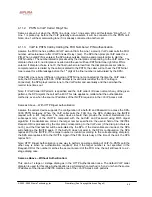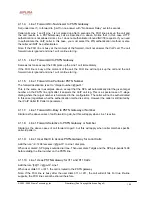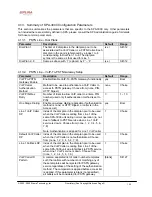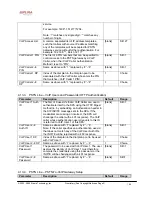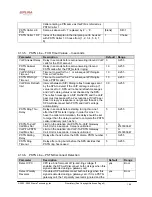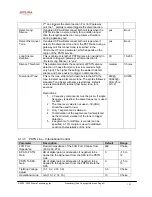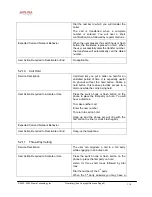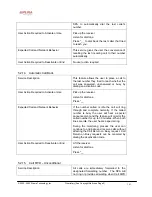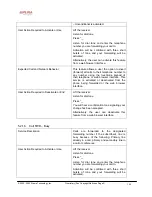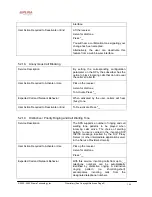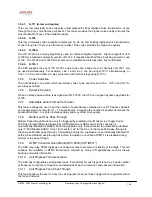
© 2003 - 2005 Sipura Technology, Inc
Proprietary (See Copyright Notice on Page 2)
113
To understand the specific implementation options of the below features, including parameters,
requirements and contingencies please refer the section Configuration Parameters, section 3.5.
5.1. Basic
Services
5.1.1.
Originating a Phone Call
Service Description
Placing telephone a call to another telephone
or telephony system (IVR, conference bridge,
etc.). This is the most basic service.
User Action Required to Activate or Use
When the user picks up the handset, the SPA
provides dial tone and is ready to collect dialing
information via DTMF digits from the telephone
Touchtone key pad.
Expected Call and Network Behavior
While it is possible to support overlapped
dialing within the context of SIP, the SPA
collects a complete phone number and sends
the full number in a SIP INVITE message to the
proxy server for further call processing. In order
to minimize dialing delay, the SPA maintains a
dial plan and matches it against the cumulative
number entered by the user. The SPA also
detects invalid phone numbers not compatible
with the dial plan and alerts the user via a
configurable tone (Reorder) or announcement.
User Action Required to Deactivate or End
Hang-up the telephone.
5.1.2.
Receiving a Phone Call
Service Description
The SPA can receive calls from the PSTN or
other IP Telephony subscribers
User Action Required to Activate or Use
When the telephone rings, pick up the handset
and begin talking.
Expected Call and Network Behavior
Each subscriber is assigned an E.164 ID
(phone number) so that they may be reached
from wired or wireless callers on the PSTN or
IP network. The SPA supplies ring voltage to
the attached telephone set to alert the user of
incoming calls.
User Action Required to Deactivate or End
Hang-up the telephone.
5.2. Enhanced
Services
5.2.1. Caller
ID
Service Description
If available, the SPA supports the generation
and pass through of Caller ID information.

